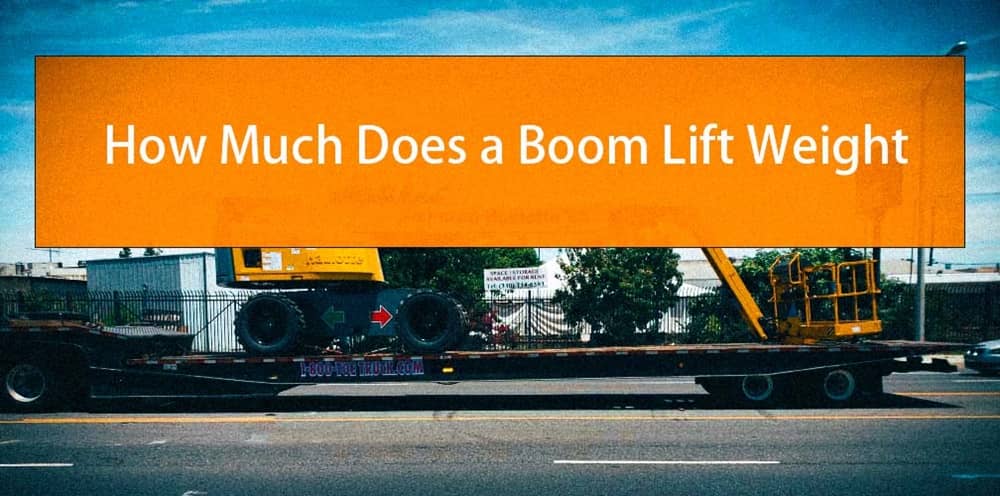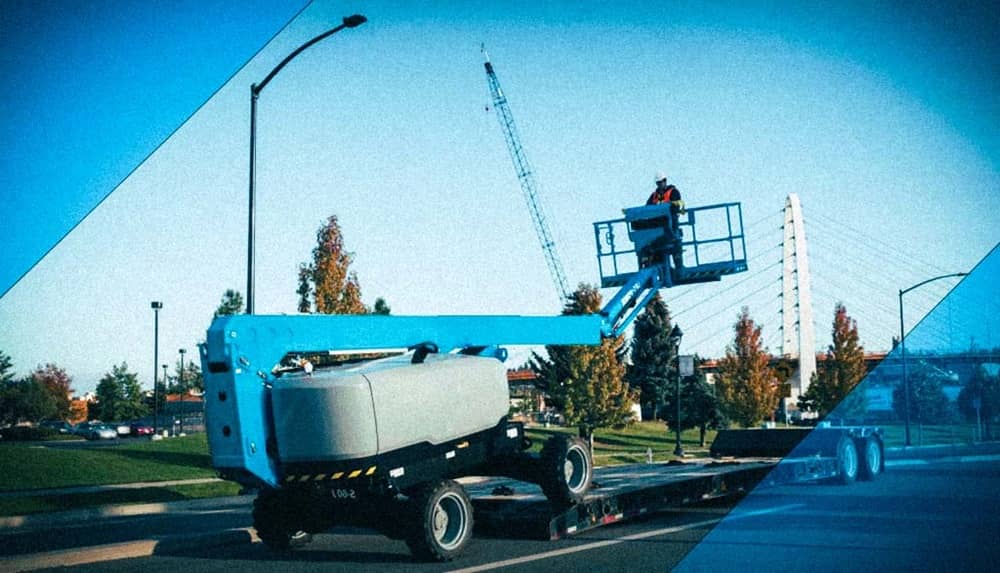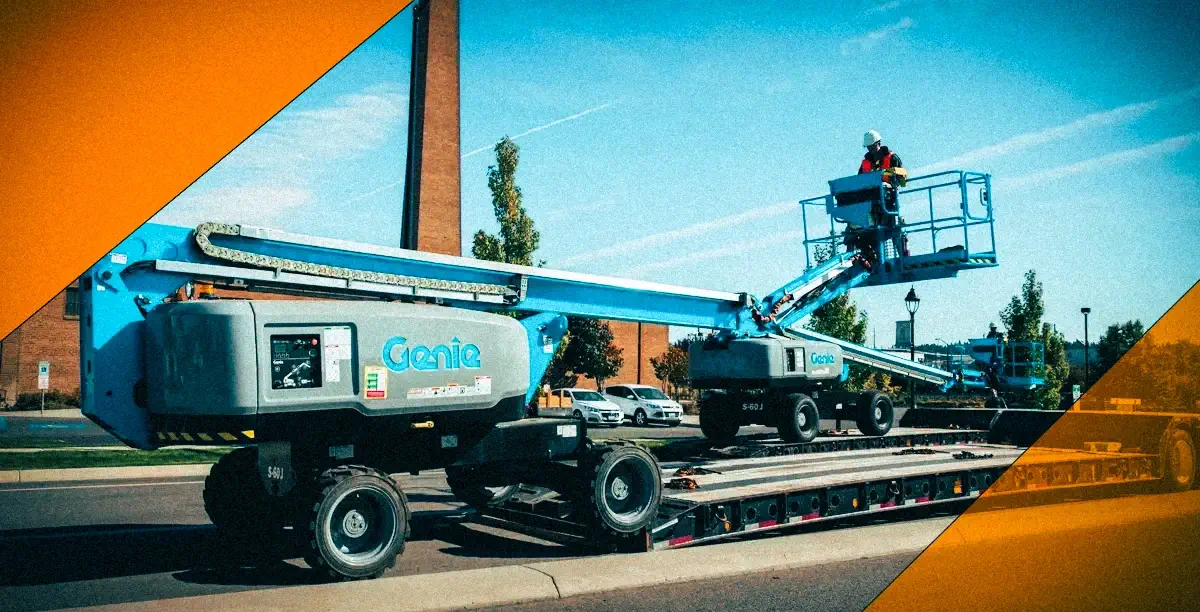Boom lifts, also called aerial platforms or cherry pickers, are common equipment that are used in a variety of industries. Boom lifts have various shapes and sizes, and their weights are highly variable. The weight of the boom lifts can be as much as 50,000 pounds, depending on the specific model and type. It’s the result of a series of carefully considered engineering decisions that concern the purpose, capacity, and design of the lift.
In this article, we’ll discuss the various factors that affect the boom lift weight and why it’s important to understand these differences in order to be safe, transport, and plan projects.

Factors Affecting Boom Lift Weight
Type of Boom Lift
Articulating Boom Lifts:
Articulating boom lifts, also known as knuckle booms, are characterized by their multiple jointed sections that allow the boom to bend and reach over obstacles. This flexibility makes them ideal for work in confined spaces or over structures that a straight boom cannot circumvent. Due to their intricate design and additional mechanical complexity, they tend to be heavier. On average, articulating boom lifts weigh between 10,000 and 30,000 pounds, depending on their reach and capacity.
Telescopic Boom Lifts:
Telescopic boom lifts, or straight booms, feature extendable arms that provide height and horizontal outreach in a straight line. These lifts are typically more straightforward in design compared to their articulating counterparts, contributing to a difference in weight. While they can reach greater heights and distances, the streamlined structure often results in a lighter overall weight. Typically, telescopic boom lifts weigh between 15,000 and 40,000 pounds.
Other Types: There are several other boom lift variations, each with distinct weight characteristics:
Scissor Lifts: Unlike boom lifts, scissor lifts utilize a crisscrossing support pattern to raise the platform vertically. They are generally lighter, with weights ranging from 2,000 to 10,000 pounds.
Towable Boom Lifts: These portable lifts are designed for easy transport and are considerably lighter, generally weighing between 3,000 and 7,000 pounds.
Spider Lifts: Featuring lightweight, compact designs and outriggers for stability, spider lifts typically weigh between 3,000 and 20,000 pounds.
Size and Platform Height
The size and platform height of a boom lift are primary determinants of its weight. As the height and size of the platform increase, so does the structural support needed, leading to an increase in weight. For instance, a boom lift with a platform height of 60 feet will naturally weigh less than one designed to reach 120 feet.

Small to Medium Boom Lifts: These typically have platform heights ranging from 30 to 60 feet and weigh between 10,000 to 20,000 pounds.
Large Boom Lifts: Designed for heights of 100 feet or more, these lifts can weigh between 30,000 to over 50,000 pounds, depending on their specific configuration.
Lifting Capacity
Lifting capacity refers to the maximum weight that a boom lift can safely carry on its platform, including operators and equipment. There is a direct relationship between a boom lift’s weight and its lifting capacity; lifts designed to carry heavier loads must be built more robustly, resulting in increased weight.
For example, a boom lift with a lifting capacity of 500 pounds will have a lighter build than one built to support 1,000 pounds. Heavier lifts feature reinforced materials and larger stabilizers to ensure safety and stability during operation.
Materials and Components
The materials used in the construction of boom lifts play a significant role in determining their weight. Modern boom lifts use a combination of steel and high-strength aluminum to balance durability with weight.
Steel: Provides robustness and durability but is relatively heavy. Its use is essential in areas requiring significant structural strength.
Aluminum: Lightweight yet strong, aluminum is used to reduce the overall weight without compromising structural integrity.
Additionally, the components of a boom lift, such as the engine and power source, significantly impact its weight:
Engine Size: Larger, more powerful engines required for higher lifts or heavier loads add to the total weight.
Battery Packs: Electric boom lifts use large battery packs which add significant weight compared to diesel-powered models.
Understanding these factors is crucial for selecting the right boom lift for a specific job, ensuring safe operation, and planning for transportation and site impact considerations.

It is critical information for anyone thinking about buying or renting a boom lift. As a used lifts dealer, Holdwell would like to stress that our wide used lifts range covers many brands and models of boom lifts differing in weight and functionality— surely one of them will meet your specific needs.
We would welcome the opportunity for you to view our product range on our website, where you will find full details, including weight details, for all the used boom lifts in our range. Additionally, our in-house team of professionals with many years of experience can give you their expert advice on choosing the lift that is most suitable for your individual project requirements.
Remember that the choice of the right boom lift can contribute significantly to efficiency in the project and the safety of the workplace. Let us guide you to make the right informed decision that will be advantageous for your operations in the long term.




